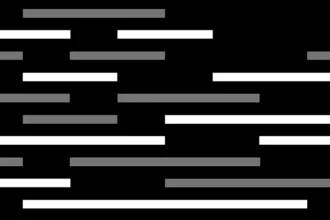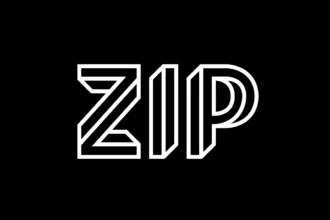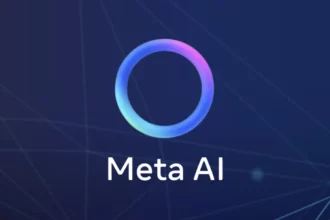Claude 3.5 Sonnet and GPT-3.5 (GPT-4o) are prominent AI language models with differing strengths. Claude 3.5 Sonnet excels in advanced reasoning and coding, while GPT-4o leads in multimodal capabilities and response speed.
Claude 3.5 Sonnet, released by Anthropic in June 2024, is the third generation in the Claude AI family, known for high accuracy, safety, and improved contextual understanding. GPT-4o, launched in May 2024 by OpenAI, stands as an evolution beyond GPT-3.5 with enhanced multimodal support including voice, images, videos, and documents.
- Claude 3.5 Sonnet focuses on safety, bias reduction, and deep text analysis with support for 200K+ tokens.
- GPT-4o supports up to 128K tokens and emphasizes versatility with real-time web browsing and DALL·E 2 integration.
Table of Contents
TogglePerformance Metrics
2.1 Latency and Throughput
- Claude 3.5 Sonnet operates approximately 2 times faster than Claude 3 Opus but still shows slower latency than GPT-4o.
- Initial throughput for Claude 3.5 Sonnet improved roughly 3.43x over Claude 3 Opus, matching GPT-4o’s current throughput close to 109 tokens/sec.
- GPT-4o maintains an edge with average response latency near 0.32 seconds.
2.2 Benchmark and Accuracy Highlights
| Task | Claude 3.5 Sonnet | GPT-4o | Winner |
|---|---|---|---|
| Graduate Level Reasoning (GPQA) | ~59.4% | ~53.6% | Claude 3.5 Sonnet |
| Undergraduate Knowledge (MMLU) | 88.3% | 88.7% | GPT-4o |
| Code Generation (HumanEval) | 92% | 90.2% | Claude 3.5 Sonnet |
| Multilingual Math (MSGM) | 91.6% | 90.5% | Claude 3.5 Sonnet |
| Verbal Reasoning Accuracy | 44% | 69% | GPT-4o |
Capabilities and Functional Features
3.1 Claude 3.5 Sonnet Strengths
- Excels in advanced, graduate-level reasoning and detailed textual analysis with 95.2% accuracy in document text tasks.
- Advanced code generation supported by the “Artifacts” feature, allowing interactive code editing and UI previews within chats.
- Superior multilingual math capability with a score of 91.6%.
- Strong visual reasoning, including analysis of imperfect images and text extraction from complex charts.
- Lower cost per usage by approximately 40% compared to GPT-4o.
3.2 GPT-4o Strengths
- Supports voice, image, video, and document inputs, enabling rich multimodal applications.
- Real-time web browsing capabilities keep its knowledge up to date.
- Integrated with DALL·E 2 for high-quality text-to-image generation.
- Fastest response speed with an average latency of 0.32 seconds.
- Best verbal reasoning performance with 69% accuracy on tested tasks.
3.3 Weaknesses
| Model | Weaknesses |
|---|---|
| Claude 3.5 Sonnet | Lacks voice/video input, no image generation, slightly slower than GPT-4o, no real-time browsing. |
| GPT-4o | Lower scores in graduate-level reasoning and detailed text analysis, no interactive coding environment. |
Evaluation and Use-Case Specific Performance
4.1 Data Extraction
Testing on legal contract extraction shows GPT-4o performs better overall but both models reach only 60-80% accuracy. Advanced prompting methods like few-shot or chain-of-thought are essential to boost performance.
4.2 Classification Tasks
- Claude 3.5 Sonnet achieves 72% accuracy on customer support ticket classification, outperforming GPT-4o’s 65%.
- GPT-4o leads in precision (86.21%), crucial to avoid false positives in classification.
- GPT-4 holds the best F1 score (81.6%), indicating the highest overall reliability.
4.3 Verbal Reasoning
GPT-4o dominates with 69% accuracy, especially strong in word relationships and opposites. Claude 3.5 Sonnet struggles with grade school-level verbal reasoning and numerical/date-related questions but performs well on analogies.
4.4 Multimodal Capabilities
Claude 3.5 Sonnet exhibits impressive multi-modal data extraction from images, especially financial charts, suggesting it could match or exceed GPT-4o in certain visual tasks when image inputs are used.
User Experience and Industry Impact
- Claude’s Artifacts feature offers interactive, real-time editing of code and text, enhancing developer workflows.
- GPT-4o provides versatile applications from personal assistants to virtual teachers, boosted by lower latency and multimodal inputs.
- Claude 3.5 Sonnet’s market share and user base are growing steadily, signaling increasing adoption.
- Both models play critical roles in sectors like healthcare, education, business productivity, research, and software development.
Summary and Recommendations
- Performance: GPT-4o generally leads in speed, multimodality, and verbal reasoning; Claude 3.5 Sonnet excels in coding, graduate-level reasoning, and detailed text understanding.
- Cost: Claude 3.5 Sonnet is about 40% cheaper, which may be significant for budget-sensitive deployments.
- Use Case Alignment: Select Claude 3.5 Sonnet for applications needing deep analysis, code development, or multilingual math tasks.
- Choose GPT-4o for interactive systems requiring multimodal input, rapid response, or real-time web access.
- Both models require fine-tuned prompting and iterative evaluation tailored to specific tasks before production use.
- Advanced evaluation tools such as Vellum provide in-depth model assessment to optimize usage.
Key Takeaways
- Claude 3.5 Sonnet outperforms GPT-4o in coding tasks, graduate-level reasoning, and document text analysis.
- GPT-4o excels in multimodal input support, image generation, verbal reasoning, and speed.
- Both models achieve 60-80% accuracy in complex data extraction, indicating room for improved prompting and model tuning.
- Model selection depends strongly on task requirements, budget, and the importance of multimodality versus detailed text reasoning.
- Iterative testing with domain-specific data and prompt engineering remains essential for effective AI deployment.
Claude 3.5 Sonnet vs GPT-3.5 (GPT-4o)
Put simply: Claude 3.5 Sonnet shines in advanced coding, graduate-level reasoning, and detailed textual analysis, while GPT-4o dominates in speed, multimodal input support, and mathematical problem-solving. The rivalry goes far beyond a simple number game; these are two modern AI contenders crafted for different strengths and audiences. So, which one really deserves your attention? Let’s unpack the tale.
Starting the Duel: Setting the Stage
Claude 3.5 Sonnet, brought to life by Anthropic in June 2024, is the latest evolution in their Claude AI line. Born from the minds of ex-OpenAI employees around 2021, Anthropic’s mission is to build safe, aligned, and powerful AI models. Think of them as the meticulous bookworms of the AI universe—focused on precision and safety without sacrificing smarts.
Meanwhile, OpenAI’s GPT-4o (“o” for omni) debuted just a month earlier, in May 2024. It’s not just any regular model—GPT-4o is a speedster with a multimodal twist. It eats voice, images, videos, and documents for breakfast, responding almost instantly (around 0.32 seconds). If Claude is the sage professor, GPT-4o is the versatile Swiss Army knife, ready to tackle a variety of tasks with flair.
Market-wise, OpenAI already has a massive footprint with a whopping 92% of Fortune 500 companies using its tech. Claude might be the new kid on the block with 2.5% market share growth in the first half of 2024, but it’s making waves rapidly. Users grew by 18% post Sonnet’s release, proving there’s plenty of room on this digital battlefield.
The Models’ Superpowers: Features in the Spotlight
Claude 3.5 Sonnet’s Arsenal
- Supports over 200,000 tokens per session, enabling long, complex conversations and deep document analysis without missing a beat.
- Built-in Artifacts feature allows interactive coding and real-time editing inside a chat UI. Imagine having an AI pair programmer who also lets you tweak code live — pure magic for developers.
- Excels in graduate and undergraduate level reasoning, multilingual math (scoring 91.6%), and detailed textual document understanding (95.2%).
- Recognizes and analyzes imperfect images and charts, especially useful for finance and complex data extraction.
- Runs about 40% cheaper than GPT-4o, offering a budget-friendly option without major compromises.
- Twice as fast as its predecessor Claude 3 Opus, showing steady evolution.
- Strong multilingual language understanding makes it ideal for global applications.
GPT-4o’s Toolkit
- A true omni-model handling voice, images, videos, and documents with ease.
- Real-time web browsing means it can fetch fresh info on the fly — like a research assistant that’s perpetually caffeinated.
- Supports up to 128K tokens, striking a balance between length and speed.
- DALL·E 2 integrated for stunning text-to-image generation — great if you want your AI to think in pictures.
- Super speedy with ultra-low latency (~0.32 seconds response time).
- Lacks integrated coding environments like Claude’s Artifacts, so code editing isn’t as smooth within chat.
Battle of the Benchmarks: Which AI Tops the Charts?
When it comes to standardized performance, these models have traded blows across various benchmarks and specialized tasks:
| Task | Claude 3.5 Sonnet Score | GPT-4o Score | Winner |
|---|---|---|---|
| Graduate-Level Reasoning (GPQA) | 59.4% | 53.6% | Claude 3.5 Sonnet |
| Undergraduate Knowledge (MMLU) | 88.3% | 88.7% | GPT-4o (slight) |
| Code Generation (HumanEval) | 92% | 90.2% | Claude 3.5 Sonnet |
| Multilingual Math (MSGM) | 91.6% | 90.5% | Claude 3.5 Sonnet |
| Complex Math Problem Solving (Zero-shot Chain of Thought) | 71.1% | 76.6% | GPT-4o |
| Visual Question Answering (MMU/val) | 68.3% | 69.1% | GPT-4o (narrow margin) |
| Textual Reasoning (DROP, FLscore) | 87.1% | 83.4% | Claude 3.5 Sonnet |
| Document Text Analysis | 95.2% | 92.1% | Claude 3.5 Sonnet |
Clearly, Claude 3.5 Sonnet holds the edge in graduate-level reasoning, code generation, multilingual math, and detailed text comprehension. GPT-4o shines in faster math problem-solving and visual reasoning with multimedia elements, reinforcing its multimodal prowess.
Real-World Smackdown: Experiments and Community Findings
Benchmarks tell one story, but actual usage reveals quirks and surprises. Here’s how these giants performed in hands-on tasks:
Data Extraction from Legal Contracts
- Dataset: Complex Master Services Agreements (5 to 50+ pages).
- Fields extracted included Contract Title, Customer and Vendor names, Termination Clause, Force Majeure presence, and more.
- Both models cracked 60-80% accuracy across most fields, indicating room for better prompting.
- GPT-4o outperformed Claude 3.5 Sonnet in 5 fields, was on par in 7, and Sonnet lagged in 2.
- Takeaway: While GPT-4o took this round, neither is a silver bullet. Advanced techniques like chain-of-thought prompting remain essential.
Financial Reports Data Extraction – Community Insights
- Hanane D. showcased Claude 3.5 Sonnet’s multi-modal excellence in extracting intricate financial chart details, even from messy images.
- Some speculate that Claude’s visual input capabilities could even outpace GPT-4o here, but rigorous testing is forthcoming.
Customer Support Ticket Classification
- Using 100 labeled cases, Claude 3.5 Sonnet scored 0.72 accuracy, beating GPT-4o’s 0.65, but trailing behind GPT-4’s 0.77.
- GPT-4o maintained superior precision (86.2%) — critical to avoid annoying false positives in customer service.
- Claude showed both leadership in 12 categories and regression in 5, an uneven yet promising performance.
- Bottom line: Claude 3.5 Sonnet is a viable alternative in classification tasks, especially where precision and recall balance shifts.
Banking Task Benchmark
- Nelson Auner’s team evaluated zero-shot and few-shot classifications.
- Claude 3.5 Sonnet consistently outperformed GPT-4o ever so slightly but persistently.
Verbal Reasoning Challenge
- 16 verbal reasoning questions pitted these AIs head to head.
- GPT-4o triumphed with 69% accuracy over Claude 3.5 Sonnet’s 44%, revealing Sonnet struggles with simpler grade school riddles.
- Both models fared well on analogy and word relationships.
- GPT-4o showed strength in word opposites, but weakness in numeric and factual questions; Sonnet had the reverse problem.
- Conclusion: GPT-4o is clearly the verbal reasoning champ here.
Performance Nuances: Latency and Throughput
Speed matters when the rubber hits the road. Claude 3.5 Sonnet outpaces its predecessor by 2x, yet GPT-4o remains faster in latency. As for throughput:
- Claude 3.5 Sonnet boosted throughput by 3.43x over Claude 3 Opus, jumping from 23 tokens/sec.
- GPT-4o launched at about 109 tokens/sec and currently matches Claude 3.5 Sonnet, with recent analyses showing near parity.
Latency-wise, GPT-4o still enjoys a smoother, snappier response — critical for interactive applications.
The Dollars and Cents: Pricing & Access
Budget-conscious AI users will appreciate that Claude 3.5 Sonnet costs roughly 40% less than GPT-4o. Claude offers both free tiers and paid subscriptions like Pro ($15/month) and Team ($30/month), making it accessible for a variety of users. It’s also available via AWS as a cloud AI, expanding easy integration.
GPT-4o’s pricing details can be steeper, reflecting its sophistication and extensive capabilities. That said, both models’ cost-effectiveness depends heavily on specific use-cases and consumption volume.
Who Fits Which Scenario? Use Cases Mapped
| Scenario | Ideal Model | Why? |
|---|---|---|
| Business Productivity (knowledge retrieval, marketing, code gen) | Claude 3.5 Sonnet | Strong in advanced reasoning, coding, and long-text understanding. |
| Multimodal Content Analysis (voice, images, video) | GPT-4o | Supports multimodal input and real-time web browsing. |
| Healthcare Data Analysis | Claude 3.5 Sonnet | Precision with sensitive and nuanced info, plus long-context support. |
| Software Development (live coding, debugging) | Claude 3.5 Sonnet | Interactive Artifacts feature enables smoother code editing workflows. |
| Education & Research (complex reasoning, tutoring) | Claude 3.5 Sonnet | Excels at graduate-level reasoning tasks. |
| Creative Media Generation (images from text) | GPT-4o | DALL·E 2 integration for robust image creation. |
Strengths & Weaknesses Recap
Claude 3.5 Sonnet
- Pros: Graduate-level and advanced reasoning, code generation with interactive editing, multilingual math ace, lower cost.
- Cons: No voice, video, or image generation; weaker real-time browsing; some struggles with quick numerics.
GPT-4o
- Pros: Multimodal input, blazing fast response, real-time internet access, great at math and image generation.
- Cons: Lower advanced reasoning scores, no chat-based code editing, slightly weaker detail-oriented text analysis.
More Than Metrics: User Experience & Industry Impact
Claude’s Artifacts redefine user engagement by letting people edit code and text right inside the chat. It feels more like a developer’s playground and less like a text-only assistant.
GPT-4o builds versatility and speed into its core, powering a wide array of customizable chatbots and assistants — the go-to for enterprises needing rapid multimodal deployments.
Anthropic stakes Claude 3.5 Sonnet as possibly the biggest contender against OpenAI’s GPT-4o. And with its surge in adoption, it’s clear that markets hunger for alternatives — particularly ones emphasizing safety, alignment, and cost-efficiency.
Final Thoughts: Which Giant Should You Befriend?
Choosing between Claude 3.5 Sonnet and GPT-4o boils down to context. If you want strong coding assistance, detailed text analysis, and advanced reasoning at a better price, Claude is your AI ally. If your work demands multimodal inputs, lightning-fast replies, and image generation, GPT-4o comes bearing gifts.
Both still struggle with complex data extraction and require clever prompt engineering to unlock peak potential. No AI superstar is flawless just yet. The key to success lies in experimentation, evaluation, and iterative tuning tailored to your unique use case.
“Experiment, Evaluate, Deploy, Repeat.”— The secret mantra to mastering AI models in production.
For teams diving deep, tools like the Vellum Evaluation Suite offer custom metric analysis and prompt testing, bridging gaps between raw power and practical performance.
Want to witness which AI flexes strongest for your needs? Booking a Vellum demo is an excellent start.
Additional Resources & Community Contributions
- LMSYS Chatbot Arena — Watch GPTs duke it out on the public ELO leaderboard.
- Hanane D.’s multi-modal evaluation notebooks — Peek into Claude’s prowess with financial chart extraction.
- Nelson Auner’s Banking Task Benchmark — Community-driven insights into classification performance.
In Summary
Claude 3.5 Sonnet and GPT-4o each have carved significant niches. Sonnet dares to exceed in reasoning, coding, and document analysis. GPT-4o doubles down on versatility, speed, and multimodality. Each release pushes the bar higher, promising even tighter competition and more powerful tools in the near future. So, buckle up — the AI showdown is just heating up.
What are the key performance differences between Claude 3.5 Sonnet and GPT-3.5?
Claude 3.5 Sonnet is faster than earlier Claude versions but has higher latency than GPT-4o (successor of GPT-3.5). Both now have similar throughput, with GPT-4o originally faster at launch.
How does Claude 3.5 Sonnet perform on complex reasoning and coding tasks compared to GPT-3.5?
Claude 3.5 Sonnet excels in graduate-level reasoning, undergraduate knowledge, and coding tasks, outperforming early GPT models in coding but still trailing GPT-4o on general reasoning benchmarks.
How effective are Claude 3.5 Sonnet and GPT-3.5 for data extraction from legal contracts?
Both models achieve around 60-80% accuracy extracting contract details. GPT-4o outperforms Claude 3.5 Sonnet on several fields but neither fully meets accuracy needs without advanced prompting techniques.
Does Claude 3.5 Sonnet have any advantages in multimodal data extraction over GPT-3.5?
Early community tests suggest Claude 3.5 Sonnet might extract complex financial chart data better, especially with image inputs, although GPT-4o’s multimodal capability remains strong and further testing is needed.
In customer support ticket classification, which model performs better: Claude 3.5 Sonnet or GPT-3.5?
Claude 3.5 Sonnet scores higher accuracy than GPT-4o on ticket classification, with fewer false positives than GPT-4o but slightly less than GPT-4. It also shows mixed regressions and improvements versus GPT-4o.





